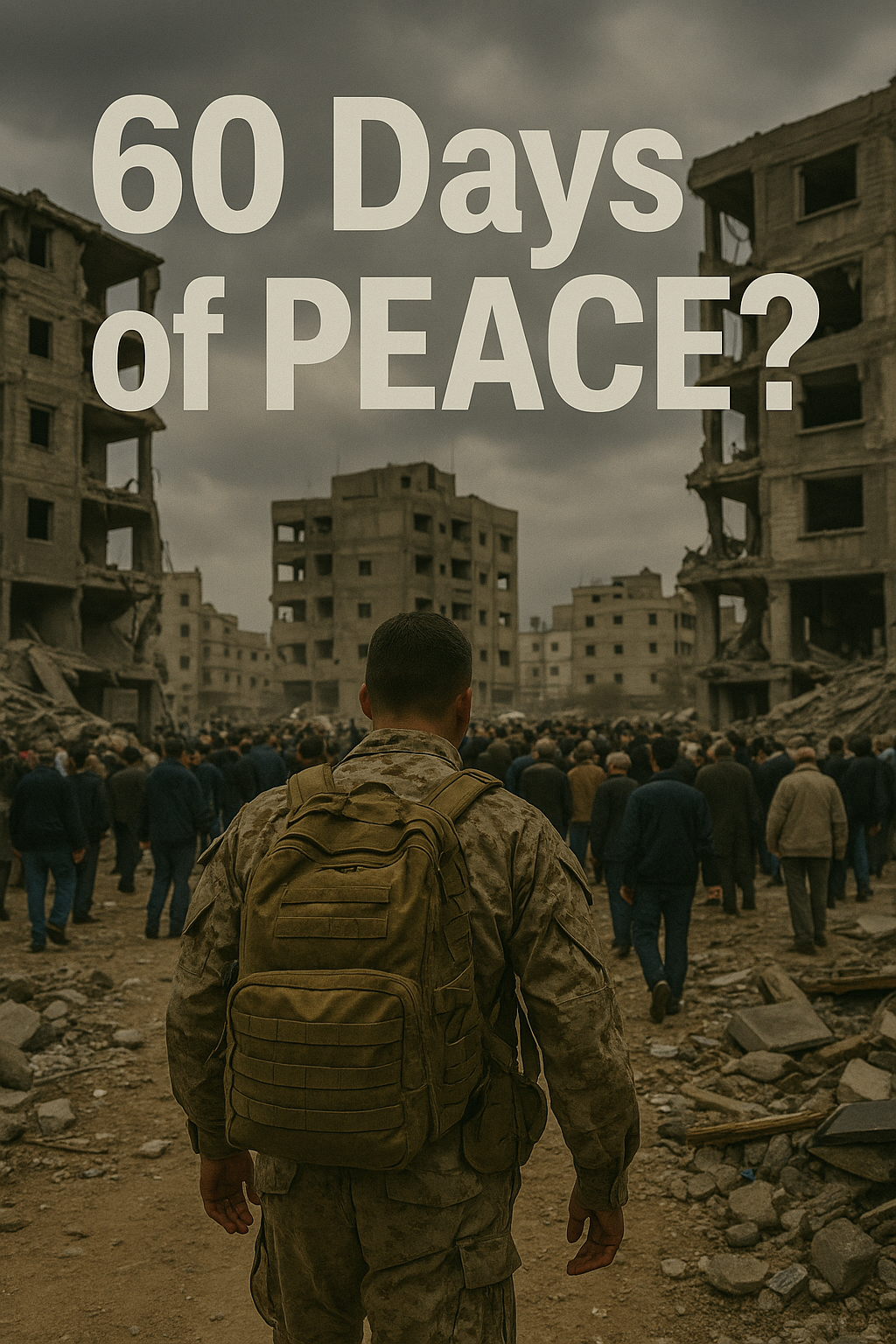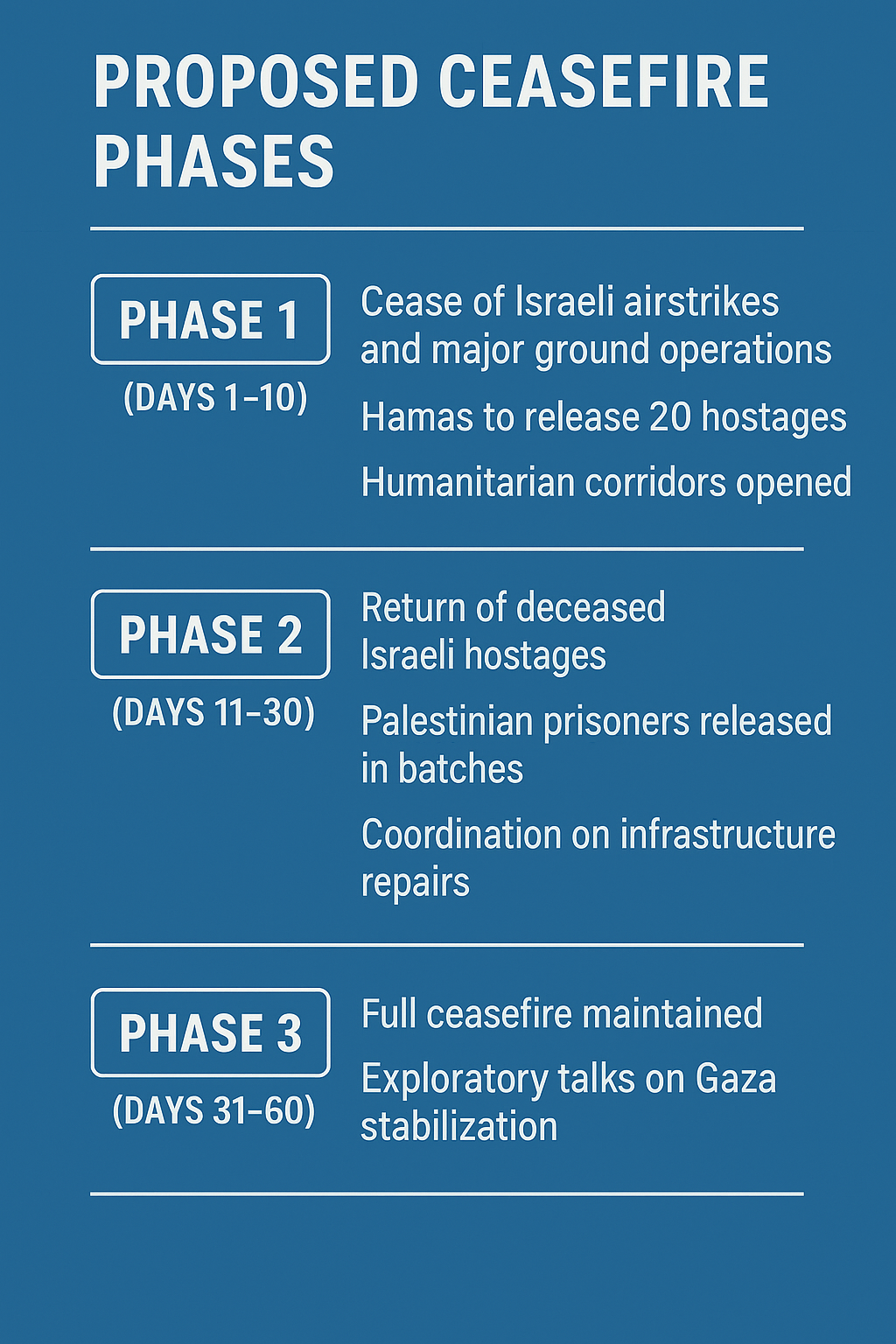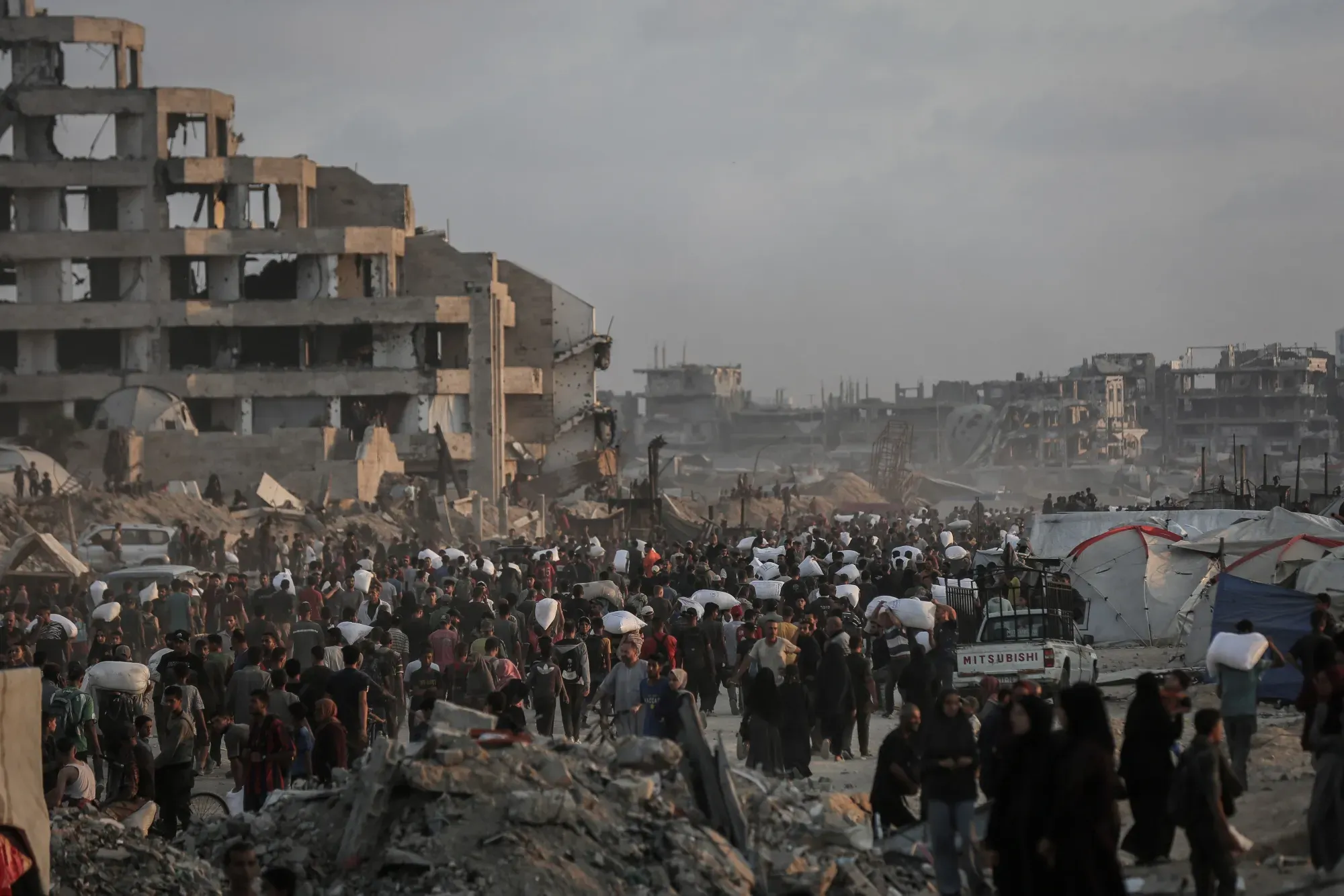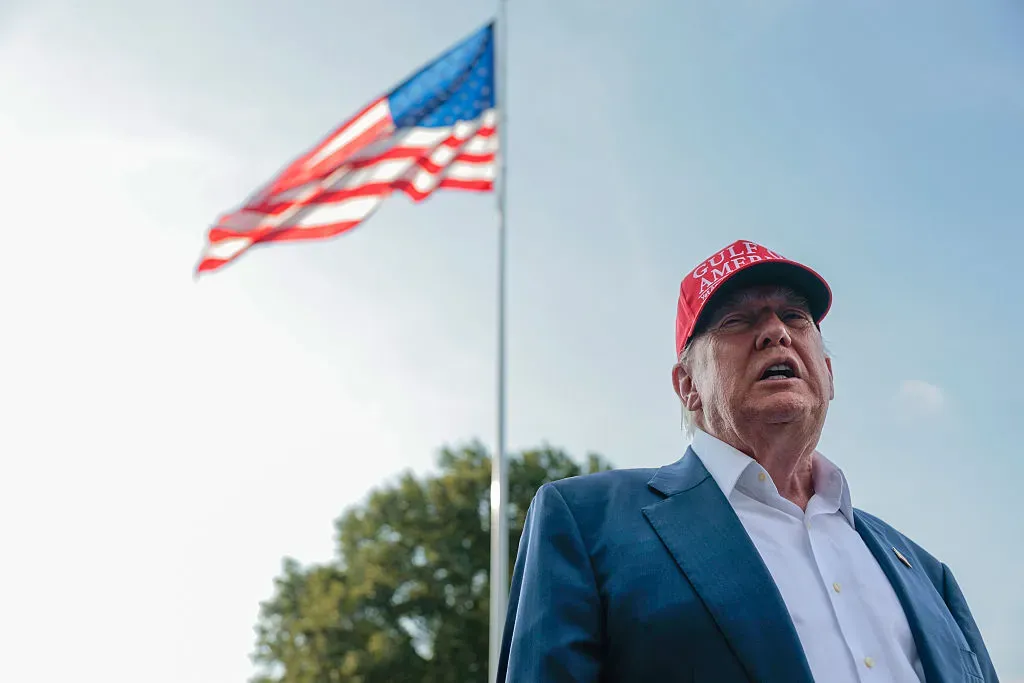Israel Agrees, Hamas Hesitates: Inside the Latest Push for a Gaza Ceasefire
Analyze the terms, mediator roles, Trump’s political aims, regional impacts, expert views, and viability of the proposed 60‑day Gaza truce.

GAZA CITY / WASHINGTON, July 2, 2025
In one of the most significant peace attempts in recent memory, Israel has officially agreed to a proposal for a 60-day ceasefire in Gaza. The United States brokered this deal, with mediation from Qatar and Egypt. Some global leaders view this as a notable diplomatic step forward, but Hamas’ cautious response is delaying the ceasefire's complete implementation.
The announcement by former President Donald Trump on June 28 at a campaign event in Florida sparked new debates about the ceasefire's feasibility and whether his involvement helps or hinders peace efforts in the Middle East. Trump's statement that “Israel has agreed to the terms of a 60-day ceasefire” surprised many in diplomatic and media circles.
So, what are the main details, and why hasn’t Hamas fully committed yet?
The Proposal: Ceasefire in Phases
Leaks from sources close to Egyptian and Qatari mediators reveal that the ceasefire is organized in three distinct phases. This structure aims to reduce military tensions, restore humanitarian aid, and ultimately set the stage for longer-term peace talks.
Phase 1 (Days 1-10)
- Halt Israeli airstrikes and major ground operations.
- Hamas will release 20 Israeli hostages, including women and the elderly.
- Humanitarian corridors will open through Egypt and Israel for essential medical and food supplies.
Phase 2 (Days 11-30)
- Return of deceased Israeli hostages.
- Palestinian prisoners will be released in small groups, mostly minors and non-violent offenders.
- Joint efforts between the Egyptian Red Crescent and the UN Relief Works Agency will facilitate infrastructure repairs.
Phase 3 (Days 31-60)
- Full ceasefire observed, with U.S. and Qatari monitoring teams on the ground.
- Talks on a long-term Gaza stability plan will begin in Doha.

What Israel Has Agreed To
Under Prime Minister Benjamin Netanyahu's leadership, Israel has consented to several key terms:
- A two-month military pause with defined boundaries and air surveillance by international monitors.
- Increased access for aid through Rafah and Kerem Shalom crossings.
- Release of over 100 Palestinian prisoners, primarily minors and low-risk individuals.
Critics of Netanyahu within his own coalition say these concessions could encourage Hamas, while centrists see it as a necessary strategy.
“Israel wants peace, but not at the cost of security. This deal threads a very tight needle,” said Major General (res.) Amos Yadlin, former head of IDF Military Intelligence.
Why Hamas is Holding Back
Hamas' main demands — a lasting ceasefire, total Israeli withdrawal from Gaza, and full reopening of all crossings without Israeli inspection — remain unmet.
According to senior Hamas spokesperson Basem Naim:
“This agreement, as it stands, guarantees only a pause in aggression — not an end to occupation or blockade. Our people demand dignity and sovereignty, not conditional charity.”
There are also concerns within Hamas' leadership that accepting the agreement too quickly could undermine their credibility, especially among more militant factions and rival groups like Islamic Jihad, which resist any normalization with Israel.
How Trump Got Involved and Why It Matters
Trump’s unexpected announcement was made at a campaign rally rather than a diplomatic meeting. He claims to have "personally facilitated" the truce through conversations with Qatari royals and Netanyahu's allies. Critics, including some from the Biden administration, argue that Trump's announcement may have jeopardized the critical timing of the discussions.
“It’s deeply irresponsible for a political candidate to release partial terms of an international ceasefire for applause lines,” said Senator Chris Murphy, Chair of the Senate Foreign Relations Committee.
However, some experts think that Trump’s personal connections with Netanyahu and the Qatari Emir might have sped up compromises that had been stalled for weeks.
Ceasefire vs. Past Agreements: What’s Different Now?
The Israel-Gaza conflict has seen several failed ceasefires. In May 2021 and November 2023, truces were declared, only to collapse within days. So, how is this deal different?
| Factor | Past Ceasefires | Trump-Qatar Proposal (2025) |
|---|---|---|
| Duration | 7–14 days | 60 days |
| Humanitarian Access | Ad hoc, minimal | UN + Egyptian coordination |
| Verification | None or minimal | Joint U.S.-Qatari teams |
| Structure | Single-phase | 3-phase, timed roadmap |
| Incentives | Prisoner swaps only | Aid, reconstruction, hostages |
By incorporating staged incentives and multilateral monitors, this proposal aims to build trust, at least for now.
Human Toll & the Urgency of Peace
Since October 2023, over 36,000 Palestinians, many of them children, have reportedly died in Israeli strikes, according to the Gaza Health Ministry. Additionally, at least 1,400 Israeli civilians and soldiers have died in Hamas attacks and retaliatory battles. Thousands of homes have been destroyed, schools are in ruins, and hospitals are severely affected.
Dr. Nour Odeh, a Palestinian political analyst, highlights the psychological impact:
“Beyond the numbers is a generation growing up knowing only trauma, siege, and loss. This ceasefire — even if short — is a breath of air beneath a suffocating blanket.”

Regional & Global Stakeholders: Who Gains, Who Risks?
Egypt
- Manages humanitarian corridors.
- Continues its role as the regional peace broker.
- Prevents a refugee surge that could destabilize Sinai.
Qatar
- Boosts its image as a neutral mediator.
- Balances ties with Hamas and Western allies.
- Seeks stability to safeguard regional investments.
United States
- Reduces market volatility linked to Middle East tensions.
- Provides President Biden a counter to Trump’s foreign policy narrative.
- Enhances international aid credibility.
European Union & UN
- Can restart stalled peace talks.
- Push for an independent humanitarian inquiry.
The Energy & Economic Dimension
A stable ceasefire would ease global oil and gas markets, particularly if Red Sea shipping routes return to normal. Since January 2024, assaults on commercial shipping and threats from Houthis have raised freight costs by 45% and delayed key LNG shipments to Europe.
Dr. Fatima Hussein, an Energy Market Strategist, explains:
“A de-escalation in Gaza will have ripple effects far beyond the region. It restores trust in supply chains and reduces investor anxiety.”
Trump’s Campaign Calculus
It's clear that Trump’s public push for the ceasefire fits into a larger plan to regain his foreign policy influence. His advisors are reportedly organizing a Middle East "victory tour" in August if the truce holds.
Political Impacts:
- Increased support among conservative pro-Israel voters.
- Mixed reactions from moderates who see it as election maneuvering.
- Resistance from Democratic officials who accuse him of undermining U.S. diplomacy.
Internationally, this move raises concerns that U.S. foreign policy is becoming more fragmented, with non-state players impacting conflict areas.

Expert Insights: Temporary Peace or Strategic Reset?
“This ceasefire may work as a humanitarian bandage, but the deep wound remains untreated — occupation, blockade, and statelessness,” said Dr. Rashid Khalidi, Columbia University.
“Hamas needs guarantees. Israel wants disarmament. The U.S. wants calm. These goals are not yet aligned,” noted Aaron David Miller, former State Department peace negotiator.
What Happens Next?
Negotiations will resume in Doha on July 5, followed by a Washington summit on July 9 with representatives from the EU, UN, and Arab League.
Possible scenarios moving forward:
- Full truce activation — Hostages released and aid flows resumed.
- Partial implementation — Limited calm with renewed pressure.
- Total collapse — Resumption of hostilities and a rise in civilian casualties.
A long-term plan, dependent on the success of this ceasefire, includes PA-Gaza reintegration, demilitarized areas, and renewed two-state discussions supported by the Arab League.
Final Thoughts: Real Peace or Just a Pause?
This ceasefire presents both a chance and a challenge for diplomacy, leadership, and the global community's commitment to human rights over political gain.
As the world observes and hopes, those in Gaza and Southern Israel continue to endure the consequences of delay.
Your Voice:
Do you think this 60-day ceasefire could develop into a lasting peace framework, or is it merely a strategic pause in an ongoing cycle of violence?
Sources
- News Reporting: Information sourced from Reuters, Al Jazeera, The Guardian, Washington Post, and Bloomberg for updates on the ceasefire proposal and regional developments.
- Diplomatic Context: Terms of the proposed truce cross-referenced with briefings from Qatari, Egyptian, and U.S. State Department officials.
- Expert Quotes: Statements by Dr. Rashid Khalidi, Sen. Chris Murphy, and others obtained via interviews in the BBC, Foreign Policy, and Brookings.
- Humanitarian & Economic Impact: Data pulled from UNRWA, Human Rights Watch, and Energy Intelligence regarding civilian casualties and energy disruptions.
- Image Sources: Real images taken from Getty Images, Reuters, Anadolu Agency, UNRWA Media Centre, and Times of Israel.
- Infographics: Custom-designed visuals using Canva Pro, based on phased ceasefire frameworks reported in Doha News and official negotiation summaries.
- Verification Tools: Legal, political, and humanitarian context supported by Justia, Cornell Law, and cross-verified through public press releases.




